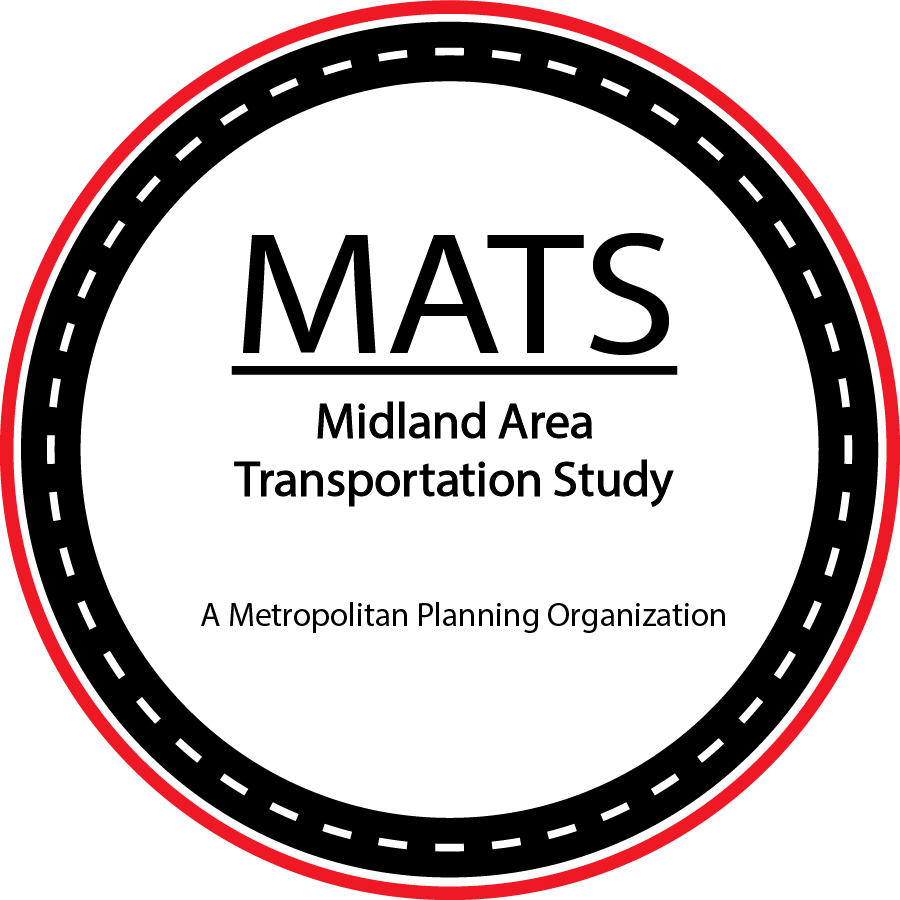What we do, and how we do it.
What is MATS?
The Midland Area Transportation Study (MATS) is the Metropolitan Planning Organization (MPO) for the Midland urbanized area. An MPO is a federally designated, multi-agency committee with professional staff that is responsible for regional transportation planning in urbanized areas. Its designation allows local governments to coordinate on transportation issues and access federal and state transportation funding.
The MATS planning area includes all of Midland County, the City of Auburn and Williams Charter Township in Bay County, and Tittabawassee Township in Saginaw County. By bringing together multiple local governments and agencies, MATS provides a formal structure for regional transportation planning and ensures compliance with federal requirements for metropolitan areas.
What MATS Does?
MATS plays a central role in coordinating transportation planning across the region. Through its Policy Committee, MATS develops regional transportation plans and programs, sets priorities, and decides which federally funded projects should move forward. The organization fosters cooperation among local governments, agencies, and stakeholders to address transportation challenges, establish policies, and implement plans that advance shared, region-wide goals. MATS works to maximize the effectiveness of transportation resources and funding while benefiting all residents in the planning area.
Transportation planning through MATS follows the principles of being continuous, cooperative, and comprehensive (the 3C’s). This approach ensures that all users of the system, including businesses, community groups, environmental organizations, freight operators, and the traveling public, have opportunities to provide input through an active public participation process. By including diverse perspectives and engaging stakeholders, MATS supports a regional approach to transportation planning that reflects the needs and priorities of the entire community.
Each year we plan, program, and report, for the good of the region.
-
The Census Bureau uses the term Urban Area (UA) to refer to the Urbanized Areas (UZA) designated by the Census Bureau for the decennial Census. Also, Federal transportation legislation allows state and local officials to adjust the Census boundaries outward, as long as they encompass the entire UZA. This results in something called an ACUB.
-
An Urbanized Area is a boundary, within which there is a pattern of continuous development out from a central core or the boundary of a UA delineated for the previous census. Existing UAs generally retain all territory that was within their previous boundaries. Areas added to the urban fringe must be contiguous to this core and must have a population density of at least 1,000 people per square mile. All area added to the UA must be connected directly by road to the main body of the UA, and this road connection must either be located within the area being added, or touch it on one side. The UA must contain at least 50,000 people.
-
The Adjusted Census Urban Boundary is a "smoothed" version of the UZA that determines the official urban designation for a road. Any road within or on the ACUB boundary is classified as an urban road. By adjusting the boundaries outward, the UAs are smoothed and create more consistent urban/rural road segment classifications, since the UZA is a US Census boundary that does not recognize political boundaries, whereas the ACUB can. Creation of an ACUB is a cooperative process between MDOT and the local units of government.
-
The Metropolitan planning area (MPA) means the geographic area determined by agreement between the metropolitan planning organization (MPO) for the area and the Governor, in which the metropolitan transportation planning process is carried out. It generally begins with the ACUB and must by definition at least encompass the entire UZA.

